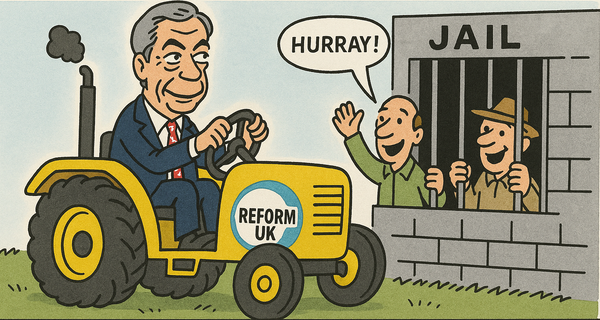Forget the volume, feel the community
The abandoned audience strategy of the 2000s might be our only hope in the 2020s. Plus, TikTok's seedy underbelly is in the open.

The blind pursuit of volume looks a lot like madness
Ben Werdmuller talking about Reach’s insane increase in journalist output, in response to the collapse in Facebook traffic:
This change requires a rethink of platform and more ownership over newsroom technology: it's time to actually innovate around what it means to publish on the web, and to, finally, move from "audience" to "community".
To be blunt: every newsroom publishing on the web that doesn't do this will go away.
Honestly, there are days when I could cry about this. We had this idea in the 2000s. Right across the media world, we were building community links with our audiences. We had community editors, whose job it was to do that. If we’d carried on over the past two decades, where would we be now?
But, instead, we were lured by the sweet seduction of free traffic from Facebook and Google, and it was so free and so easy that we didn’t bother building those relationships. And now the taps have been turned off, and we’re left with nothing.
It’s time to start rebuilding those communities.
For the first time in a very long time, one of my students from last academic year has a job as a community editor. It’s a start.
TikTok knows its app is bad for some teens
Accidentally unsealed court documents show an organisation more interested in pretending to do something about the problems, than actually fixing them:
NPR reviewed all the portions of the suit that were redacted, which highlight TikTok executives speaking candidly about a host of dangers for children on the wildly popular video app. The material, mostly summaries of internal studies and communications, show some remedial measures — like time-management tools — would have a negligible reduction in screen time. The company went ahead and decided to release and tout the features.
Again, TikTok presents us with an engagement challenge. We should go where the audience are — but should we follow that maxim when the app is both controlled by an antagonist power and is known to be bad for younger users?
From the documents:
One unnamed TikTok executive put it in stark terms, saying the reason kids watch TikTok is because the power of the app’s algorithm keeps them from “sleep, and eating, and moving around the room, and looking at someone in the eyes.”
My daughter turns 13 next summer. I have some serious thinking to do.
Can AI write better podcast episode titles?
A full Betteridge there because the answer seems to be “no”:
The downside (and somewhat encouraging) learning from this experiment for me has been that AI doesn't seem to be better than humans at headline writing. While it occasionally comes up with a usable (if uninspired) headline, it's a long way from what we humans can come up with.
But that doesn’t mean they didn’t find it useful in other ways…
Quickies
- 📚 A guide to good curation on Flipboard
- 📹 The Mail is investing in long form video. It’s a massively dominant form of online media, that seems to have eluded most of the traditional journalism world.
- 🎨 A bunch of new AI features in Adobe Creative Cloud
- 🐘 Mastodon 4.3 is out, with several new features. Of most interest? A way of highlighting the Mastodon accounts of article authors. Here’s how I set it up here.
And finally…
The Google AI podcast hosts discover they’re not real
Funny, but dark…





